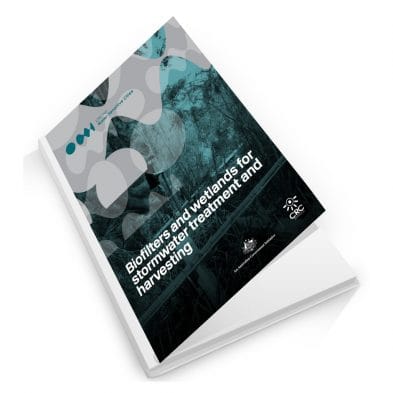Biofilters and wetlands for stormwater treatment and harvesting publication
 New research demonstrates that in addition to nutrients, well-designed stormwater biofilters are capable of removing metals, pathogens and achieving reduction in bacterial indicators.
New research demonstrates that in addition to nutrients, well-designed stormwater biofilters are capable of removing metals, pathogens and achieving reduction in bacterial indicators.
The CRC for Water Sensitive Cities (CRCWSC) is pleased to release its latest publication on “Biofilters and wetlands for stormwater treatment and harvesting”. This publication is the result of more than five years of research that commenced with the Facility for Advancing Water Biofiltration (FAWB) and the Cities as Water Supply Catchments program, both initiatives of Monash University. This report not only provides important research insights, it makes valuable design recommendations to achieve enhanced performance for biofilters (or biofiltration systems comprising combined soil and plant filtration systems) and constructed (or artificial) wetlands.
Stormwater has emerged as a viable, alternative water resource. As a result, general urban runoff (e.g. stormwater that runs off streets and car parks) has been increasingly harvested in the past few years. The CRCWSC sought to refine existing, and develop new novel stormwater harvesting technologies, building upon the proven concepts of water sensitive urban design (WSUD).
The results documented in this report are based on a series of laboratory- and field-scale research projects designed to investigate two of the most common WSUD technologies used in Australian stormwater harvesting schemes – biofilters and constructed wetlands – for their capacity to remove different pollutants (e.g. nutrients, faecal microorganisms and micro-pollutants).
This research confirms that biofilter design and operation greatly affect the overall pollutant removal capacity of WSUD and stormwater harvesting schemes. Research findings also demonstrate that well designed stormwater biofilters are capable of removing pathogens and can achieve a 1-log reduction for bacterial indicators. Constructed wetlands are also shown to produce promising results in reducing microorganism concentrations, in addition to nutrients and metals.
To review all the exciting results and design recommendations, download a copy of this publication here.
To request a hard copy of this publication, please email info@crcwsc.org.au